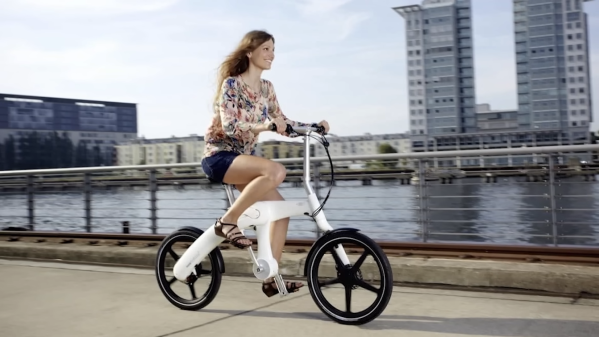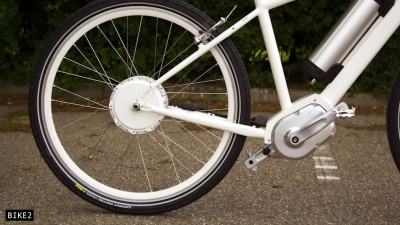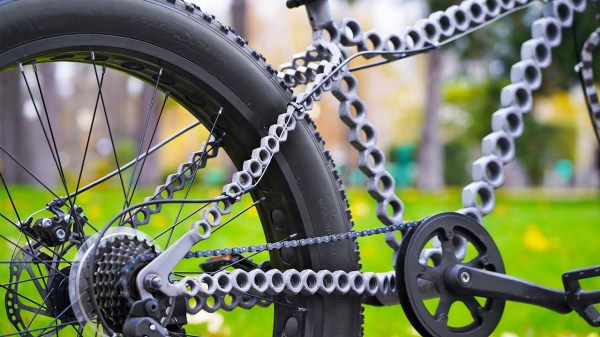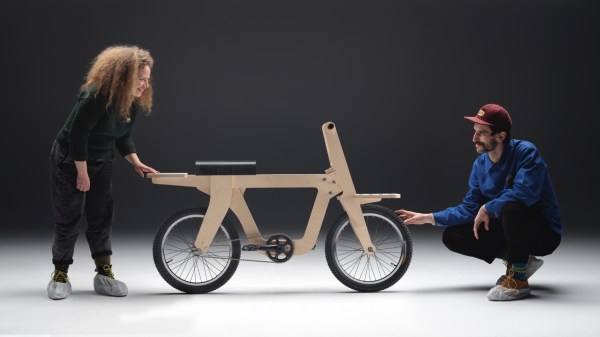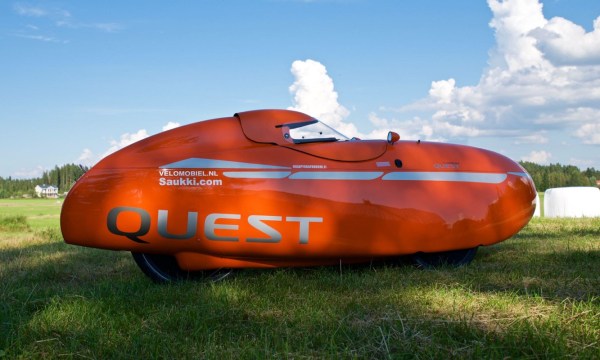One of the problems of being a cyclist is that a bicycle just isn’t designed to carry much more than a human. You can get panniers and hang shopping bags from the handlebars, but sooner or later there’s a load which just doesn’t fit. At that point there’s only one way forward that involves staying on two wheels: find a bike trailer. If you fancy building one yourself, then there’s La Charette (French language, Google Translate link), an open-source three-wheeler design from France.
Construction is a sturdy welded box section tube spaceframe, with the single wheel at the front providing steering, and a towing bar attached to the seat post of the bicycle. Along with the impressive load capacity comes the problem of towing it, and for the cyclist with less-than-superhuman strength there’s the option of an electrically-driven front wheel. Stopping the whole thing is an essential feature with loads this size, and to that end there’s an inertial braking system operated by the force on the towing bar.
All in all it appears to be a useful trailer, albeit on the large side for storage when not being used. It’s certainly one of the larger bike trailers we’ve seen, though not perhaps the most stylish.
Thanks [Jeff] for the tip!



